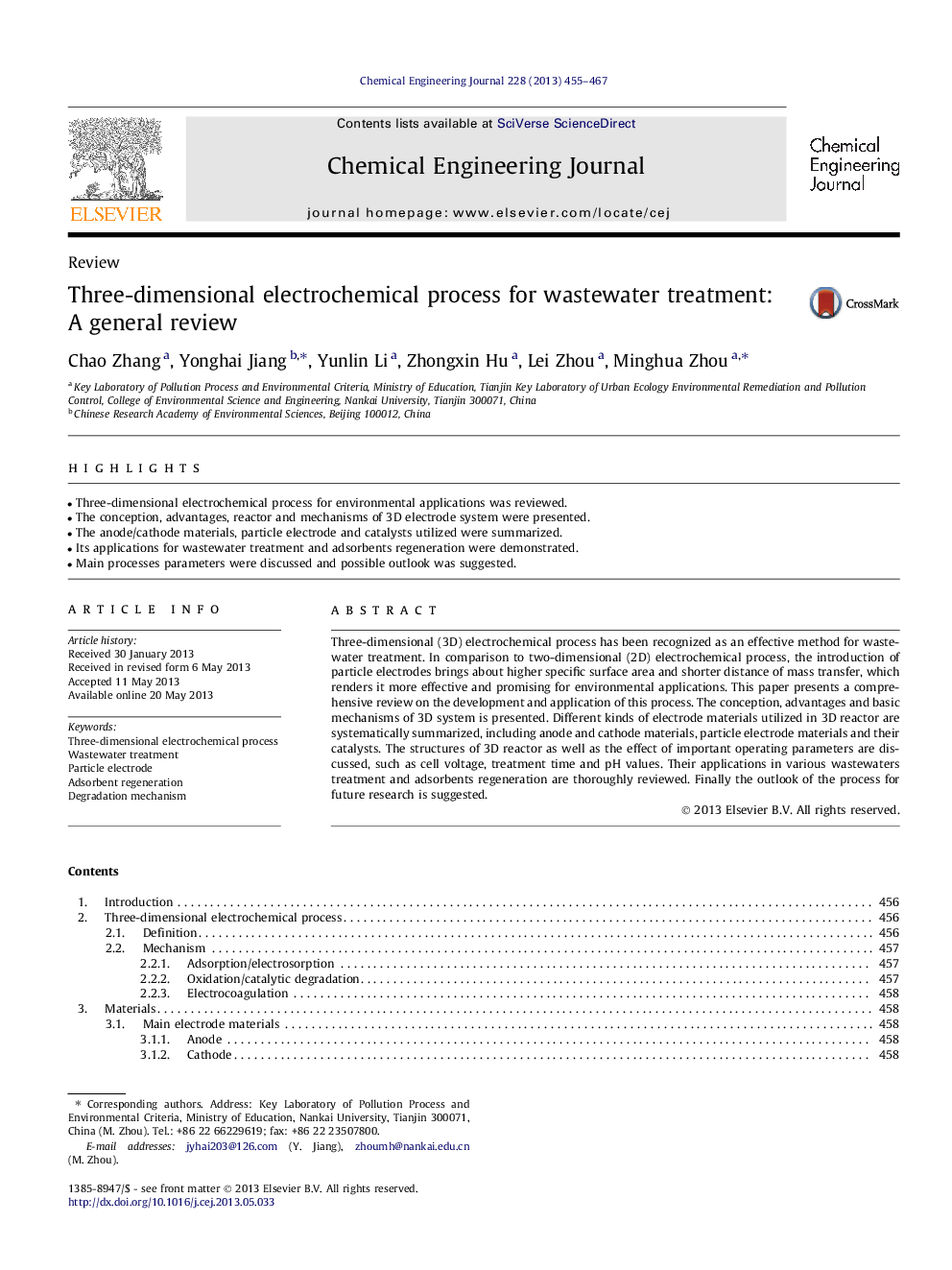| Article ID | Journal | Published Year | Pages | File Type |
|---|---|---|---|---|
| 6587124 | Chemical Engineering Journal | 2013 | 13 Pages |
Abstract
Three-dimensional (3D) electrochemical process has been recognized as an effective method for wastewater treatment. In comparison to two-dimensional (2D) electrochemical process, the introduction of particle electrodes brings about higher specific surface area and shorter distance of mass transfer, which renders it more effective and promising for environmental applications. This paper presents a comprehensive review on the development and application of this process. The conception, advantages and basic mechanisms of 3D system is presented. Different kinds of electrode materials utilized in 3D reactor are systematically summarized, including anode and cathode materials, particle electrode materials and their catalysts. The structures of 3D reactor as well as the effect of important operating parameters are discussed, such as cell voltage, treatment time and pH values. Their applications in various wastewaters treatment and adsorbents regeneration are thoroughly reviewed. Finally the outlook of the process for future research is suggested.
Related Topics
Physical Sciences and Engineering
Chemical Engineering
Chemical Engineering (General)
Authors
Chao Zhang, Yonghai Jiang, Yunlin Li, Zhongxin Hu, Lei Zhou, Minghua Zhou,
